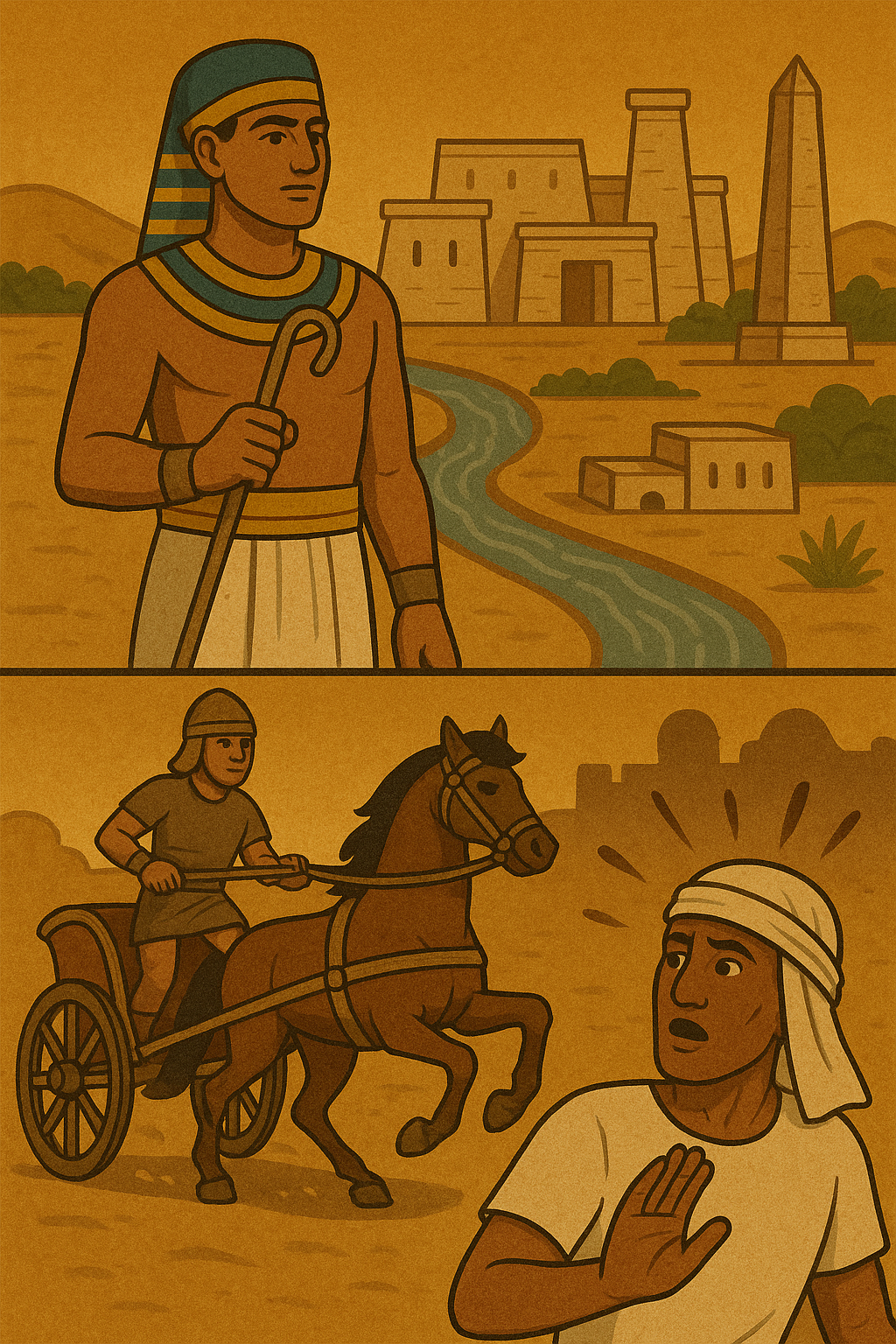Lesson 3: The Middle and New Kingdoms (Kingdoms of the Nile)
🏞️ The Middle Kingdom
The Middle Kingdom lasted from about 2050 to 1750 BCE. It was a time of peace, order, and building.
Pharaohs made Egypt strong again after a time of problems. They built canals, temples, and irrigation systems to help farms grow more food.
📖 Story: One pharaoh, Mentuhotep II, united Egypt and moved the capital to Thebes. He was seen as a great hero who brought Egypt back together.
But later, Egypt was invaded by a group called the Hyksos, who used horses and chariots. Egyptians had never seen anything like it! They ruled Egypt for over 100 years.
🏺 The New Kingdom
The New Kingdom (about 1550 to 1050 BCE) was Egypt’s golden age. It was the time of powerful pharaohs, wealth, and an empire that stretched far beyond the Nile.
🏰 Building an Empire
Egypt became a world power. Pharaohs like Thutmose III and Ramses II led the army and took land in Asia and Africa.
📖 Story: Ramses II was known as “Ramses the Great.” He ruled for over 60 years, built huge temples, and even made a peace treaty with the Hittites — one of the first in history!
🐪 Growth and Effects of Trade
Pharaoh Hatshepsut was a female pharaoh who loved trade. She sent ships to faraway lands like Punt (possibly in East Africa). They brought back gold, perfumes, ivory, and monkeys!
📖 Story: Hatshepsut had a beautiful temple built at Deir el-Bahri. On its walls are pictures of the exotic animals and treasures from her trade journey!
⚔️ Invasions of Egypt
After the New Kingdom, Egypt became weaker. It was attacked by the Sea Peoples, Libyans, and later foreign empires like the Assyrians and Persians.
🧑🌾 Work and Daily Life
Life in Egypt was organized by jobs and class. Let’s meet the people who built Egypt!
🖋️ Scribes
Scribes were the only people who could read and write. They wrote laws, letters, and records. Becoming a scribe was a way to move up in society.
📖 Fun Fact: Scribes practiced writing on broken pottery before they used real papyrus!
🎨 Artisans, Artists, and Architects
These workers made beautiful jewelry, statues, and temples. Architects designed grand buildings for the pharaohs.
📖 Story: One Egyptian artist carved a statue so detailed that even the lines on the hands could be seen!
🛍️ Merchants and Traders
They brought goods like copper, gold, leather, and fine cloth from other lands. They helped make Egypt rich and well-known.
🛡️ Soldiers
Soldiers protected Egypt and fought in wars. They could win land, treasure, and sometimes even move up in class.
🌾 Farmers and Other Peasants
Most Egyptians were farmers. They grew wheat, barley, and vegetables, and helped build monuments during the flood season.
📖 Fun Fact: Farmers paid taxes in grain. Sometimes they even worked on temples and pyramids instead of paying money!
🔗 Slaves
Slaves were often prisoners from wars. They worked in homes, farms, and sometimes helped build temples. Some could earn freedom over time.
🏠 Family Life in Egypt
Families were important. Most Egyptians lived in mudbrick homes. Women could own land, run businesses, and divorce if needed.
📖 Story: Children played with toys, like carved animals and balls. They even had board games, like Senet, which was also played in the afterlife!
🧠 Why It Matters
The Middle and New Kingdoms were times of growth, strength, and learning.
Pharaohs built empires and made peace.
Ordinary people helped Egypt become one of the greatest civilizations in history.
